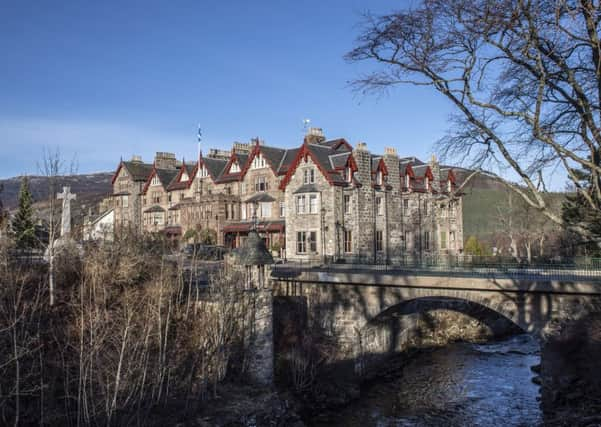Feature: Writer Justine Picardie celebrates high fashion and the Highlands


I was staying at The Fife Arms in July, and suggested it as an idea – because it felt as if the legacy of Frances Farquharson made it the perfect and authentic setting for a weekend of talks and events.
You’ve always been fond of Scotland – what has been your personal connection to the Highlands?
Advertisement
Hide AdAdvertisement
Hide AdMy husband Philip Astor has long-standing family connections with Scotland – his maternal grandfather, Earl Haig, was Scottish, as was his paternal grandmother. He inherited a very beautiful Scottish estate in Aberdeenshire, which I grew to love as much as he did, and though he sold this two years ago, we still have close friends and family in the area, and retain strong links with Scotland.
There is also a connection through your work with Harper’s Bazaar. Can you explain?
I came across the story of one of my predecessors at Bazaar, Frances Farquharson, in the Bazaar archives, when we were researching Bazaar’s 150th anniversary in 2017. She worked for the magazine in London from the early 1930s until 1945 – and then moved to Braemar when she married Alwyne Farquharson, the Laird of Invercauld. Thanks to her, many of her friends from her Bazaar years came to Braemar – including the legendary designer Elsa Schiaparelli.
Often we can best understand social history through particular individuals. Can you tell us about the significance of Frances Farquharson?
Frances was a formidable character – a woman of immense determination and ambition, at a time when there were far fewer women in journalism than today. Her story – and those of her female colleagues, who continued to work at Bazaar throughout the Second World War, while also serving as fire wardens and ambulance drivers at night during the Blitz – is hugely inspiring.
And how did Elsa Schiaparelli come to be a frequent visitor to Braemar?
Thanks to her friendship with Frances, Schiaparelli discovered the joys of Braemar – and also the beauty of Scottish textiles.
How important is it that the links between Paris couture and Scottish culture should be explored?
Advertisement
Hide AdAdvertisement
Hide AdI think it’s immensely important – Paris couture ateliers still use the beautiful textiles produced in Scotland – and the historic links between Scotland and France also play a part in the story of both countries.
Tell us about Coco Chanel’s links to Scotland. Your book Coco Chanel: the Legend and the Life explored how inspirational she found the Highlands.
I did a lot of research in Scotland for my biography of Chanel – exploring the time she spent in the Highlands, during her relationship with the Duke of Westminster, who had a vast estate in Sutherland. I discovered extraordinarily atmospheric pictures of Chanel in the 1920s, dressed in Scottish tweed, during her summers of salmon fishing with the Duke and his close friend Winston Churchill. It was also thanks to the time that Chanel spent in the Highlands that she started using Scottish tweeds and cashmere in her fashion collections – a tradition that still continues today.
What was your first impression of The Fife Arms? We understand you recognised some art work?
I absolutely love The Fife Arms – and it really does feel like a home from home, as it contains a great many Scottish artworks that my husband sold when we left our home in Aberdeenshire. We’re both thrilled that these have found such a good home at The Fife Arms, alongside modern masterpieces. One of my favourites is a water colour by Queen Victoria of a stag, that now hangs in the entrance hall of The Fife Arms.
Your next project involves Dior. Did Christian Dior have any links to Scotland?
Yes, absolutely. Christian Dior loved Scotland, and staged a number of fashion shows here in the 1950s. Like Chanel and Schiaparelli, he was inspired by the magnificent landscape, as well as the exceptionally beautiful textiles.
Why is it important for fashion festivals to celebrate the work of designers?
Advertisement
Hide AdAdvertisement
Hide AdI always think that conversations between people are important – that we experience real connections, rather than simply communicating online. That’s as true for fashion as it is for literary events – or indeed musical festivals.
What’s next for you?
I’m leaving Bazaar, after more than seven years as editor in chief, to write my next book, Miss Dior, which will be published by Faber. It explores the story of Christian Dior’s sister, Catherine, who was in the French Resistance during the Second World War. She’s an unsung heroine – like so many other women who fought against fascism – and it feels more important than ever to reveal how rapidly democracy can be eroded, and why freedom is worth fighting for, as well as what Liberation might look like.
Justine Picardie will be speaking at The Fife Arms fashion weekend (8-10 November), see www.fifearms.com/fashion-weekend for more.